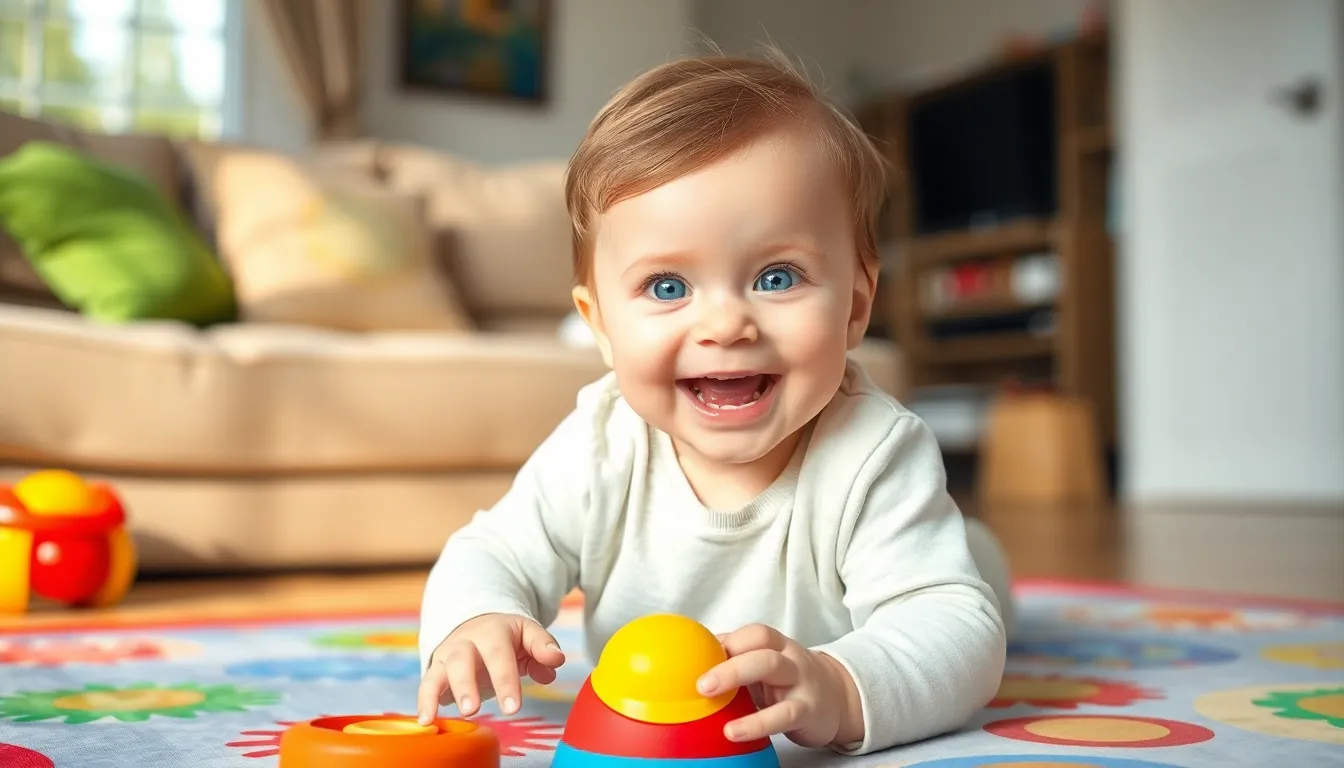Understanding a one-year-old’s respiratory rate is crucial for parents and caregivers. At this age, children undergo significant developmental changes, and their breathing patterns can vary widely. Knowing what’s normal helps in identifying potential health issues early on.
Typically, a healthy respiratory rate for a one-year-old ranges from 20 to 30 breaths per minute. However, various factors can influence this rate, including activity level, sleep, and overall health. By monitoring these changes, caregivers can ensure their child’s respiratory health remains on track.
In this article, we’ll explore the importance of respiratory rates in young children, what to watch for, and when to seek medical advice. Being informed empowers parents to take proactive steps in safeguarding their child’s well-being.
Table of Contents
ToggleUnderstanding Respiratory Rates in Children
Understanding respiratory rates in children aids in assessing their health. Parents and caregivers can recognize potential issues by monitoring these rates.
What is Respiratory Rate?
Respiratory rate denotes the number of breaths taken in a minute. For a one-year-old, the normal range is 20 to 30 breaths per minute. Factors such as activity levels, excitement, sleep, and health conditions can affect this measurement. Parents should measure respiratory rates by observing chest movements or using a timer for accuracy.
Importance of Measuring Respiratory Rate
Measuring respiratory rate holds significant importance for health assessments. It provides insight into a child’s overall well-being. Deviations from the normal range might indicate respiratory distress or illness. Parents can identify warning signs early, such as rapid or labored breathing, which may require medical attention. Regular monitoring empowers parents to make informed health decisions for their children.
Normal Respiratory Rate for 1 Year Olds

A one-year-old normally breathes between 20 to 30 times per minute. Several factors can influence this rate, warranting close attention from parents and caregivers.
Average Respiratory Rate Ranges
| Age | Normal Respiratory Rate (breaths per minute) |
|---|---|
| Newborn | 30 to 60 |
| Infant | 30 to 50 |
| 1 Year Old | 20 to 30 |
| Toddler | 20 to 30 |
The average respiratory rate for a one-year-old typically falls within the 20 to 30 breaths per minute range. It’s essential to monitor these values as they can vary slightly based on individual factors.
Factors Influencing Respiratory Rate
- Activity Level: Physical exertion, such as playing or crawling, can raise the respiratory rate.
- Excitement: High levels of excitement can lead to an increased breathing rate due to heightened adrenaline.
- Sleep: A child’s respiratory rate may decrease significantly during restful sleep.
- Health Status: Illnesses or allergies can elevate or impair normal respiratory function, affecting overall breathing patterns.
- Environmental Conditions: Factors like temperature, humidity, and altitude can also impact respiratory rates.
Monitoring these factors aids in understanding variations in breathing patterns, allowing parents to recognize potential health issues effectively.
Signs of Abnormal Respiratory Rates
Abnormal respiratory rates in a one-year-old can indicate potential health issues. Monitoring these rates helps in early identification of respiratory problems.
Identifying Low Respiratory Rates
Low respiratory rates, defined as fewer than 20 breaths per minute for this age group, can signify respiratory distress. Symptoms that may accompany low respiratory rates include:
- Lethargy: Reduced energy levels or excessive sleepiness.
- Pale or bluish skin: Noticeable discoloration, particularly around the lips and fingertips.
- Weak cry: A quieter than normal cry may reflect fatigue or distress.
- Decreased movement: Less active or responsive behavior than usual.
Parents should observe their child’s overall condition and seek medical advice if these symptoms appear.
Recognizing High Respiratory Rates
High respiratory rates, marked as more than 30 breaths per minute, may indicate underlying issues requiring attention. Symptoms often associated with elevated respiratory rates include:
- Rapid breathing: Noticeably faster than the usual rate.
- Chest retractions: Skin pulling in around the ribs or neck during breathing.
- Wheezing or stridor: High-pitched sounds indicating narrowed airways.
- Nasal flaring: Widening of the nostrils when breathing hard.
Understanding these signs can assist caregivers in making timely decisions regarding their child’s health.
How to Measure Respiratory Rate Accurately
Measuring a child’s respiratory rate accurately requires specific techniques. By following best practices and utilizing proper tools, parents can ensure precise readings.
Best Practices for Parents
- Observe Calmly: Ensure the child is calm and relaxed before taking the measurement. Excitement or activity can increase respiratory rates.
- Position the Child: Position the child comfortably, either lying down or sitting up. This positioning helps display the chest movement clearly.
- Count Breaths: Place a hand on the child’s torso or observe the chest rise and fall. Count the number of breaths for 60 seconds to obtain an accurate rate.
- Stay Discreet: Avoid drawing attention to the counting process. Attention can inadvertently alter the child’s breathing pattern.
- Check Multiple Times: If uncertainty exists, measure the respiratory rate at different times. Consistency across measurements helps validate the results.
Tools for Measuring Respiratory Rates
| Tool | Description |
|---|---|
| Timer/Watch | A stopwatch or clock helps measure the duration of the counting period. |
| Smartphone App | Specific health apps can help track respiratory rates, providing a convenient and organized approach. |
| Stethoscope | A stethoscope can provide clearer insights by enhancing the ability to hear breaths, though it may not be required for general counting. |
| Pulse Oximeter | Though primarily for measuring blood oxygen, some devices display respiratory rates, offering additional monitoring options. |
| Ventilator/CPAP Monitor | If a child has existing health conditions, these devices may provide accurate respiratory monitoring. |
Using these tools effectively helps ensure accurate respiratory measurements, enabling parents to monitor their child’s health.
Monitoring a one-year-old’s respiratory rate is essential for ensuring their health and well-being. Parents and caregivers equipped with knowledge about normal ranges and influencing factors can act quickly when concerns arise. Recognizing signs of abnormal breathing patterns can be crucial in identifying potential health issues.
By employing proper techniques for measuring respiratory rates and understanding when to seek medical advice, caregivers can play an active role in their child’s health management. This proactive approach not only fosters confidence but also promotes a safer environment for children as they continue to grow and develop.




